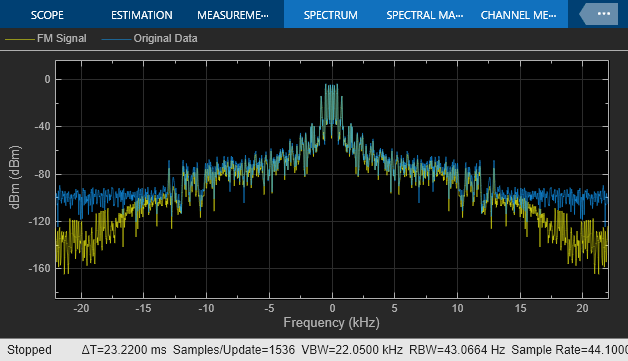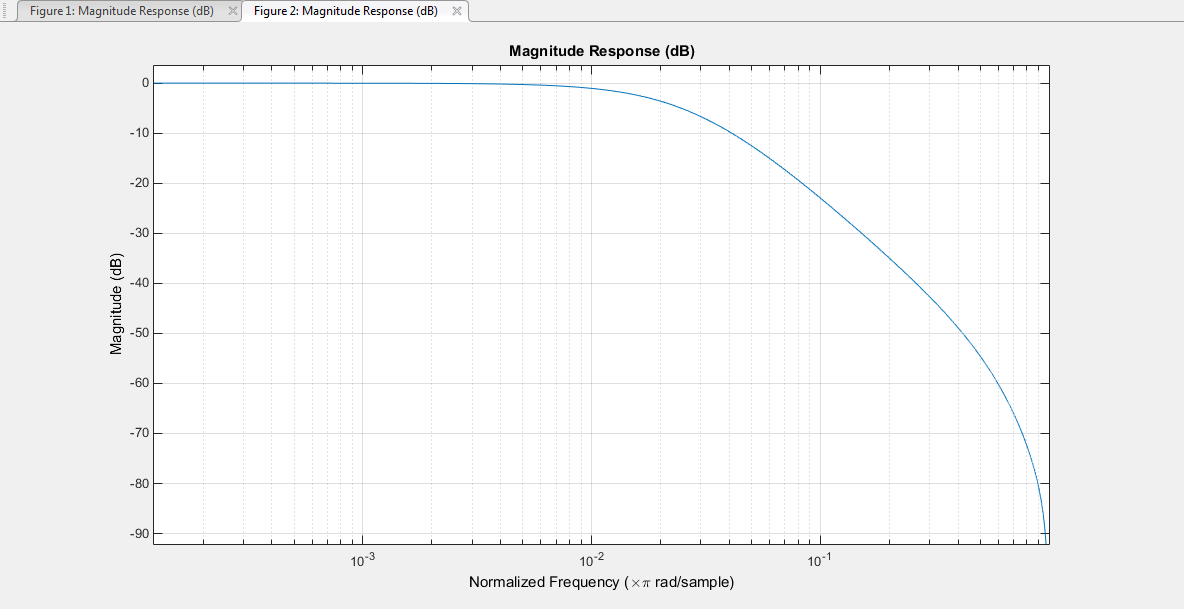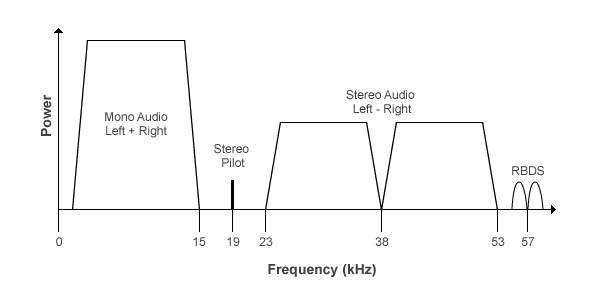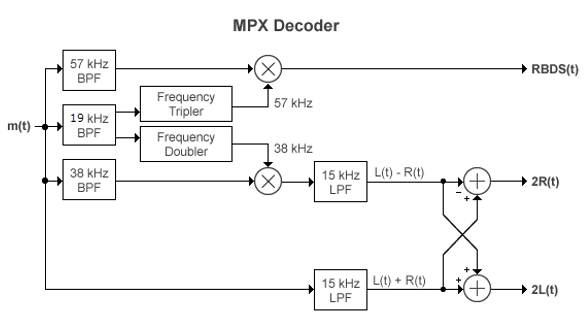FM Broadcast Demodulator Baseband
Demodulate broadcast FM-modulated signal
Libraries:
Communications Toolbox /
Modulation /
Analog Baseband Modulation
Description
The FM Broadcast Demodulator Baseband block demodulates a broadcast FM signal into a stereophonic or monophonic audio signal, and the optional RDS (or RBDS) signal. For more information, see Algorithms.
This icon shows the block with all ports enabled.![]()
Examples
Limitations
The input length must be an integer multiple of the audio decimation factor. If you select the RDS/RBDS demodulation check box, the input length must also be an integer multiple of the RBDS decimation factor.
Ports
Input
Output
Parameters
Block Characteristics
Data Types |
|
Multidimensional Signals |
|
Variable-Size Signals |
|
Algorithms
References
[1] Hatai, I., and I. Chakrabarti. “A New High-Performance Digital FM Modulator and Demodulator for Software-Defined Radio and Its FPGA Implementation.” International Journal of Reconfigurable Computing (December 25, 2011): 1–10. https://doi.org/10.1155/2011/342532.
[2] Taub, H., and D. Schilling. Principles of Communication Systems. McGraw-Hill Series in Electrical Engineering, 142–55. New York: McGraw-Hill, 1971.
[3] Der, Lawrence. "Frequency Modulation (FM) Tutorial." Silicon Laboratories Inc.: 4–8.
Extended Capabilities
Version History
Introduced in R2015a





